Everything I've Learned as a Designer – Part 1
Jake Dragash
2023-01-09
7min
Design
Whether you're a seasoned designer or just starting out, there's always something new to learn. In this blog series, I'll share the lessons I've learned so far.
Before jumping into each topic, I’d just like to preface this post with a disclaimer:
I, like any other designer, experience good and bad days. On bad days I have crushing imposter syndrome. I feel like a fraud, even a failure, and just plain bad at what I do. I sometimes honestly feel like I can’t design anything good.
But those are the bad days.
On good days, I feel super excited to learn as much as I can about design, to jump into the details, to thumb through innovative work and ask, “How’d they do that!?”, and to share everything I’ve learned along this journey.
This list is by no means exhaustive — but it’s things I’ve observed over time that would have helped me to know earlier, which I hope might help you too.
Communicate Clearly and Often
Wow, this one is not easy to learn. When I was just starting my career a large amount of uncertainty and lack of confidence came from doing the exact opposite of this — not clearly communicating, not communicating often.
Time and time again I would find myself in situations where I had no idea what I’m supposed to design because I was too afraid to ask what was on my mind. I’d sit in a short meeting with my project manager or maybe they’d tag me in a ticket brief. Then… I’d stare at a blank screen waiting for someone to throw me a bone.
Not a recipe for success, let me tell you.
The trick with designing isn’t in the pixels — it’s in your volunteering to help solve a problem. Anyone can become a designer and I believe everyone is capable of great design solutions. But what being a designer really means is taking up the full-time job of doing something not everyone wants to do — distilling a business need into a solution people will actually use.
And how do you get there? By asking a ton of questions.
Ask early, ask often. Even if it’s the most benign thought, share it with whom you’re talking to. Share it with the client, with a stakeholder, with a developer, with your PM. Share it with your design partner. Asking questions brings clarity to everyone involved.
The more questions you ask, the less guesswork you’ll do. The less guesswork you’ll do, the happier the client and the better the project outcome.
And if you’re still not sure about something? Ask again.
Get good at formulating precise questions and I think you’ll see that designing will get that much easier. Your confidence will grow as you’ll get used to seeing the problem solve itself while you ask away.
Understand Context
This is a very powerful tool in your toolbox.
A lot of design talk these days focuses on honing in on a process, and repeating that process in order to see successful results. I think there’s great value in that. Designing with no process in mind definitely will not lead to great results. But practicing navigating each client’s needs, each project’s goals, and what exactly you’re designing in the first place is going to foster something in you that is invaluable:
Flexibility.
We like when others listen to us. We like to work with people who “see it our way”. And although as designers we will have to put a hard stop to things like poor usability or questionable patterns — we need to be aware of our constraints.
Focus on what that individual, team, or company needs.
If all they really need is an update to a problematic flow — work on that. Don’t offer an entire redesign of their product. Do they need a redesign? Yes. But right now, that’s not the discussion. Focus on doing one thing well, and then the next thing, and you’ll see that doors will open up.
Think, “How can I bring value to my client’s problem while guiding them with best practices?”
Choose Your Battles Wisely
Boy, this is another tough one. And as with all my points, I am still learning this every day.
Design is a hard industry because there isn’t just one way to solve something. And “solving” is a relative term when you take into account all parties.
A design team will solve a problem just for the client to say the team they hired doesn’t understand good design. A client will solve a problem only for the design team to be left weeping in front of an empty canvas of yet-to-be-drawn pixels for tomorrow’s deadline.
I’ve seen designers choose too many battles; I’ve seen designers choose too few. It’s a tightrope, and it’s not always clear which battles are worth fighting for.
One thing I have learned is that causing friction at every step ultimately yields a net negative.
Why?
Well because no one likes to be told at every subsequent moment that they are wrong and don’t understand how to design their own product. All that says to the client is “I am right; you are wrong” — which is a terrible start to any relationship.
So what’s a better approach? I’m still figuring that one out… But it seems to me there are a few things you can do to get better at walking this tightrope.
First, listen.
Acknowledge the thoughts, concerns, and expertise of who you’re working with. Even if you know deep down an idea won’t work, take a moment to honestly consider it. You are not a superhero and you need all the help you can get. So be open to accepting ideas from everyone — because you are all on the same team. A good project means having one goal: creating the best possible product.
Once I started to reframe my awkward situations in this light, things started to feel lighter and everyone seemed to simply be happier. Asking questions didn’t feel like a pain, but an opportunity to better inform my designs. Iterating became less of a chore and more of a challenge.
Secondly…
Don’t Explain — Pitch
My first design mentor introduced me to the principle of pitching.
And in doing so he directed me to the likes of, among others, Chris Do. People like Chris have learned the art of pitching and how much inherent value it has to maximize the work you’ve already done.
Explaining means going through a list of functionalities — pitching means selling why those functionalities make sense.
When presenting a design, instead of saying, “We added a search bar.” try clarifying, “You’ll notice an auto-suggest search bar now replaces the time-consuming dropdown in order to help users more quickly add someone to their shared file, since this seems to be a recurring pain point.”
This tells the client you’ve done your homework.
You’re thinking about the user and you’re thinking about the client’s business goal of creating a better product. (That's why they hired you, right?) What it also does is it tells them a story. No one wants to listen to a dry activity log — they want to see what new features have been cooked up in the UX lab.
There’s no way around it, however: pitching is selling. But selling doesn’t have to be a dirty word (unless we’re talking MLMs here). It makes you carefully choose your feedback. And in a good client, this is what pitching should evoke.
Change requests are cheap when every design choice has equal weight.
It’s our job to help the client be aware of the amount of work that went into our design choices. If we’ve succeeded in shedding some light on this subject, the client will have a better understanding of what it takes to get it right and hopefully that will inform how they give feedback and what kind of changes they request.
Another thing to note is pitching doesn’t have to always mean presenting.
Is the client more prone to reading? Annotate your design work with strong arguments. Maybe they’re constantly busy and can’t make it to many calls? Film a five minute Loom video and send it over.
Pitch in the language of who you’re working with. They’ll appreciate it!
That wraps up part one of this two-part series.
In part two, we’ll take a look at a few more points like these while also jumping into more of the technical and educational aspects of design!
A dose of (Design) Dopamine
Updates and resources
In-depth guides
Quality content for free


















